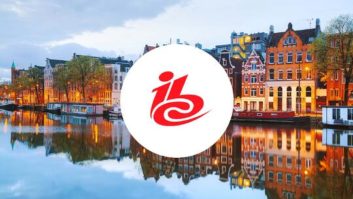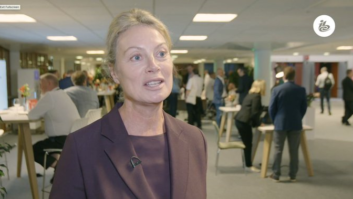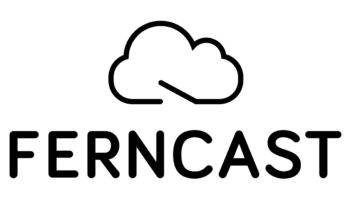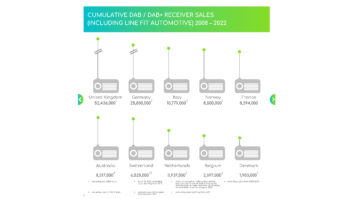European Developments Address Slow Growth of Digital With New, Non-Audio Services
The United States isn’t the only country in which digital radio has been struggling. Even though the Eureka-147 DAB system has been well-established in the European market, and digital radio broadcasts have been available for some time in several countries, the service largely has been considered a dismal failure to date.
This assessment applies to other countries outside of Europe where DAB has been deployed, such as Canada, Israel, South Africa, Singapore, Taiwan, Turkey and China. In fact, in Sweden, where the world’s largest single-frequency network DAB system has been deployed for a six-channel national broadcast service, Swedish Radio already has begun shutting down parts of the network due to lack of consumer interest. Other countries also have scaled back or delayed planned deployments.
There are several reasons for this, one of which is the lack of widely available and affordable receivers. This issue seems to be slowly dissipating, as an increasingly broad range of DAB receivers are being introduced in the European market, both for home and car use. There are even a few portables coming to market soon.
Cost and battery life still are likely to limit the appeal of the latter, but a few of the fixed units seem to be getting into competitive price territory, including a few tabletop, boombox and clock radio designs, the cheapest of which is priced at around $175.
Nevertheless, the bulk of the offerings still fall in the $500 to $1,000 range, which most analysts still consider prohibitive to mainstream acceptance. Many of these receivers were on display at last month’s International Broadcasting Convention in Amsterdam, and there was particular attention paid to the new, lower-priced models. Also drawing notice were some new form factors for DAB radios, such as add-ons to the Compaq iPAQ PocketPC.
But there is another, probably more influential, factor to the lack of interest in DAB to date. In almost all cases, the services offered on DAB also are available via analog radio, often on the FM band. This makes the primary differentiation for the DAB service purely one of audio fidelity, which apparently is not compelling enough to cause large appeal – at least not with the current price differential between analog and digital receivers.
Therefore it was with some interest to broadcasters at IBC 2002 that a number of new and highly differentiating services for DAB were demonstrated.
DAB multimedia
The data transmission elements of the EU147 specification are now well-established, and a few broadcasters have initiated experimental services of this type.
The way the service works is elegant and straightforward. Data services are considered in two main categories: Program-Associated Data (PAD) and the so-called Packet Mode. (The latter formerly was known as N-PAD, for Non-Program Associated Data, but system architects apparently didn’t like the negative tone of this label.)
PAD can include a number of data types. The two main formats are Dynamic Label Segment (DLS), a text-based system used like RDS text, typically for artist and song-title information, and the Multimedia Object Transport (MOT), used for graphics and other media transmission to DAB receivers, as the title implies.
All PAD content is carried inside the Main Service Channel frames of the EU147 format, which includes all the standard radio audio and data services of the ensemble. These are standard MPEG-1 Audio Layer II frames that are extended in the EU147 format to carry DAB-specific elements. (The audio in these extended frames can still be recognized and decoded by a standard Layer II decoder, which will simply ignore the DAB-specific bits.)
In terms of transport, PAD is subdivided in these MSC frames into Short PAD (4 bytes per frame, used for the most critical information) and Extended PAD (X-PAD, up to 44 bytes/frame, used for more in-depth information that only certain receivers may be able to display, and transmitted with less robustness than Short PAD).
EU147’s MSC frames are 24 ms in length, meaning that the equivalent payload rate for Short PAD is 1.3 kilobits per second (similar to RDS), while X-PAD can provide up to an additional 14.4 kbps.
Meanwhile, Packet Mode data is transmitted on its own, independent of the MPEG frames of the MSC. Packet Mode data can be allocated however much of the full EU147 ensemble (1.5 Mbps total) that a broadcaster desires, but typically 64 to128 kbps is used. Of course, whatever bits are allocated to Packet Mode are no longer available for MSC services, so the number and quality of audio channels in the MSC are traded off to accommodate Packet Mode data carriage.
There is no limitation to the data types than can be carried via DAB Packet Mode. At present, HTML is most commonly used, allowing broadcasters to provide a Web-like service to widely deployed browsers via the radio. A variant of the well-established European Teletext format also is in use.
New directions
New developments shown along these lines at IBC 2002 included a PC-based peripheral encoder card for Windows platforms, which allows insertion of up to four simultaneous data services, for a total data rate of 256 kbps. Developed by the well-known German R&D entity, the Institut für Rundfunktechnik or IRT, the device, called PacketMUX, also offers monitoring of the received data services.
Another product making its debut was the TMC-611 DAB receiver from Taiwan Microwave Communication. In a very small form factor, about the same footprint as a PC mouse, this device provides full Eureka-147 receiving and decoding, for both VHF and L-band applications, with on-board digital and analog audio outputs, and a USB 1.1 port for DAB data display on a PC. (It also supports the Canadian channelization map for L-band DAB, which differs from the European L-band standard used elsewhere.)
The unit is a plug-and-play PC device and is supplied with a Windows API and a controller user-interface for applications developers and broadcasters to use in creating and evaluating DAB data services.
Harris and Nagra Futuris premiered a solution for managing new businesses based on such DAB data delivery, via the integration of Nagra’s Digital Radio Business Platform with Harris’s D-AISY automated insertion system.
In perhaps the most interesting integration project, a Swedish company called Etheractive Solutions showed a prototype Compaq iPAC with a sleeve incorporating a DAB receiver and a GSM/GPRS phone, including its own battery, which would allow true interactive radio applications in a handheld device.
There were also several conference sessions that highlighted various applications for these new services and systems, ranging from enhanced commercial music programs incorporating integrated e-commerce, to personalized infotainment services, to distance learning.
Interestingly, all of the stand-alone DAB receivers shown included only small, monochrome text displays, with the advanced data services only showing up on PC- or PocketPC-based systems. It therefore seems likely that the personal computer may figure significantly in the consumer hardware and software landscape of radio’s future, as the existing installed base of such displays is exploited for new applications.
It appears that the industry has begun to recognize the need for development of interesting new services provided by DAB. Without providing such unique value, DAB may be destined to languish as an unfulfilled promise across the world.












